I am completely new to Python (I started last week!), so while I looked at similar questions, I have difficulty understanding what's going on and even more difficulty adapting them to my situation.
I have a csv file where rows are dates and columns are different regions (see image 1). I would like to create a file that has 3 columns: Date, Region, and Indicator where for each date and region name the third column would have the correct indicator (see image 2).
I tried turning wide into long data, but I could not quite get it to work, as I said, I am completely new to Python. My second approach was to split it up by columns and then merge it again. I'd be grateful for any suggestions.

